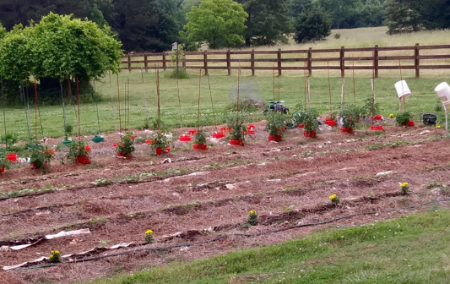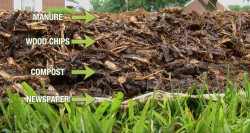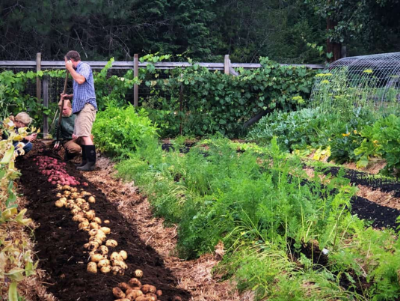No-Till Gardening

Many of the farmer’s in our area utilize no-till farming with their crops, but No-Till Gardening hasn’t gained in popularity until recently. One reason it is gaining in popularity is to protect the structure of the soil, which even in a garden is negatively impacted by tillage. This structure is important to water and air movement in your garden along with root growth. Another reason no-till gardens are becoming more popularity is they tend to be lower maintenance and require less equipment to maintain. Let’s talk about getting started because the fall is the optimal time to try something new.
Getting started with a no-till garden is relatively similar to starting any new garden plot. Select a garden site that will have plenty of sunlight and is not in a low spot where water might pool and stand. You should also make sure you have easy access to water and that the location is not too far from your house. If the site is in your yard or has weeds growing in it, you will have to kill the current vegetation through a couple options. One option is to use a herbicide to spray the area to kill the weeds. It’s best to water the area in well several days before you spray to ensure you kill the weed rather than burning the foliage. A second option is to cover the location with either plastic or cardboard to kill the plants underneath. All of these options can work, especially in the late summer to fall when we have warm days still. If you already have a garden spot you use wait till the garden is finished for the year before you start.
Once you have your spot prepared it’s time to develop that layer of mulch that will help improve the soil along with keeping the weeds down. The first step is to cover the ground with a layer of cardboard or newspaper to help suppress weeds that might try to sprout. Then cover that area with a layer of mulch or compost 6-10” thick. This is the key to keeping the weeds down. This layer can be composed of anything but the picture to the left gives a sample of one way you could layer your mulch layer. In the spring before you plant, plan your beds so they are 3-4’ wide. Keep your beds narrow so you can weed, plant and harvest without walking in the area and have designated walk ways so you don’t have to walk in your planting areas to prevent soil compaction over time. When you go to plant simply scrape the mulch away down to the ground, plant your seeds or plant, then push the mulch back once the seeds have sprouted. Try to maintain at least a 6” layer of mulch on top of the soil at all times, so it will need to be replenished every year to some degree. That’s why fall is a great time to start with all the leaves that will soon be falling.
mulch that will help improve the soil along with keeping the weeds down. The first step is to cover the ground with a layer of cardboard or newspaper to help suppress weeds that might try to sprout. Then cover that area with a layer of mulch or compost 6-10” thick. This is the key to keeping the weeds down. This layer can be composed of anything but the picture to the left gives a sample of one way you could layer your mulch layer. In the spring before you plant, plan your beds so they are 3-4’ wide. Keep your beds narrow so you can weed, plant and harvest without walking in the area and have designated walk ways so you don’t have to walk in your planting areas to prevent soil compaction over time. When you go to plant simply scrape the mulch away down to the ground, plant your seeds or plant, then push the mulch back once the seeds have sprouted. Try to maintain at least a 6” layer of mulch on top of the soil at all times, so it will need to be replenished every year to some degree. That’s why fall is a great time to start with all the leaves that will soon be falling.


